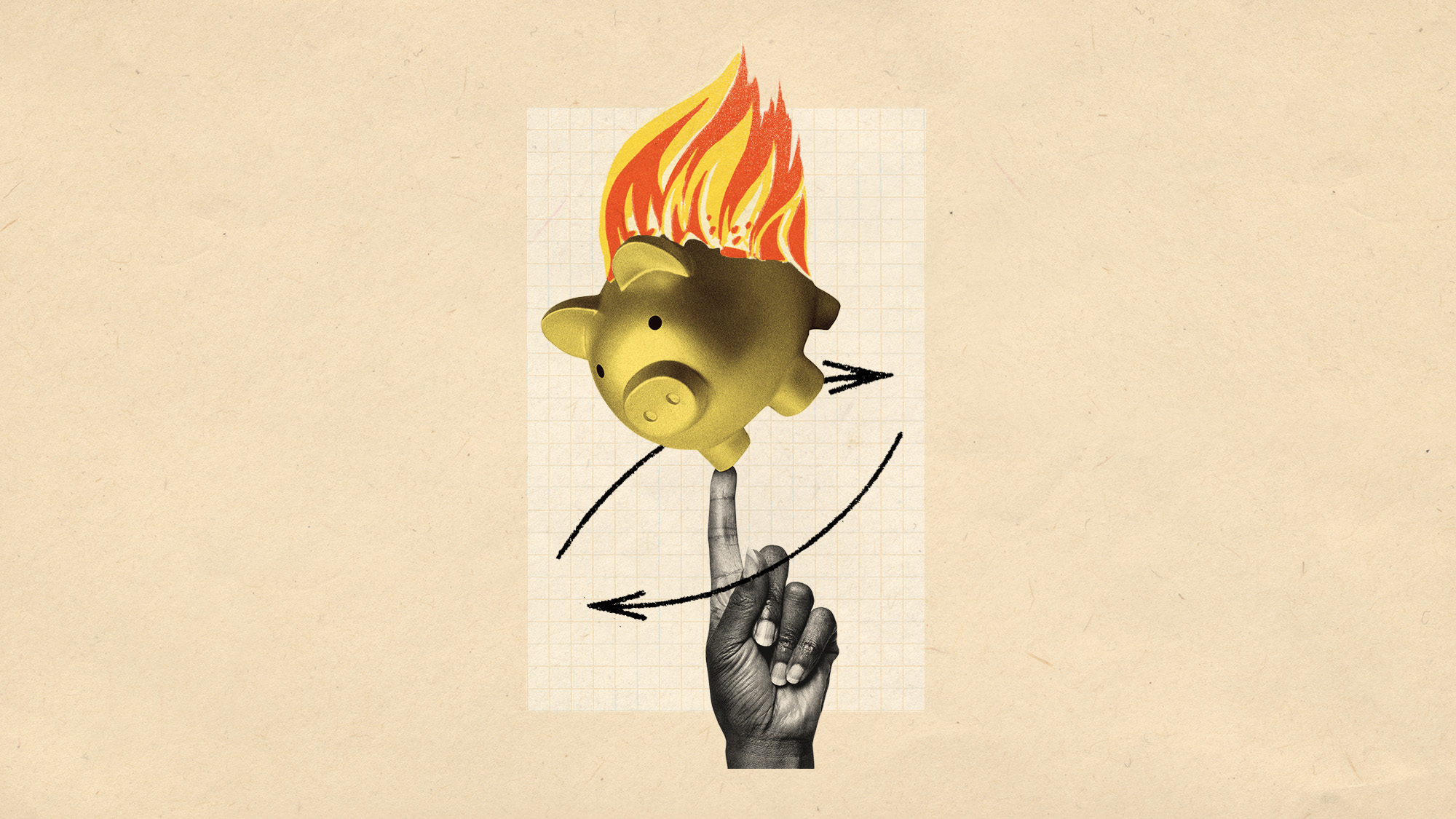Everything you need to know about alternative investments
An estimated 80 percent of young investors are allocating more of their portfolios to investments that fall outside of the classic categories



Alternative investments are gaining traction. An estimated 80 percent of young investors are allocating more of their portfolios to investments that fall outside of the more classic categories like stocks and bonds, a study from Bank of America in October 2022 found.
What are the different types of alternative investments, and are they worth adding to your portfolio?
What are alternative investments?
"Alternative investment" is essentially a catch-all term for any asset that doesn't fall into the three conventional investment categories stocks, bonds, and cash. They can range from private equity and venture capital funds to real estate and cryptocurrency. Alternative investments "typically fall into four categories: hedge funds, private equity, 'real assets' such as real estate or commodities, and prepackaged investments known as 'structured products,'" explains CNBC.
The Week
Escape your echo chamber. Get the facts behind the news, plus analysis from multiple perspectives.

Sign up for The Week's Free Newsletters
From our morning news briefing to a weekly Good News Newsletter, get the best of The Week delivered directly to your inbox.
From our morning news briefing to a weekly Good News Newsletter, get the best of The Week delivered directly to your inbox.
Compared to more conventional investments, "most alternative investments have fewer regulations from the U.S. Securities and Exchange Commission (SEC)," Investopedia says. They also tend to be less liquid, meaning they're harder to convert into cash without seeing an effect on market value. Alternative investments can also have steep minimum investment requirements, and they may carry more fees and greater risk compared to traditional investments.
Historically, alternative investments were aimed at institutional investors or accredited investors, meaning those who have a special status under federal securities laws due to their income, net worth, or licensing. But now, "alternative investments have become feasible to retail investors via alternative funds," Investopedia says.
When you apply via our links we may earn an affiliate commission
Examples of alternative investments
This category is wide-ranging. Here are some of the specific kinds of investments considered alternative investments:
A free daily email with the biggest news stories of the day – and the best features from TheWeek.com
- Real estate: This can include investing in a physical property as well as buying into funds that invest in real estate, such as real estate investment trusts (REITs) or real estate mutual funds.
- Commodities: The category of commodities can include "cows, corn, oil, gold or other essential raw materials that are grown or mined," Nerdwallet explains.
- Cryptocurrencies: This category includes Bitcoin and other forms of digital currency.
- Art and collectibles: High-value art or other objects such as sports memorabilia or jewelry can also be considered an alternative investment.
- Peer-to-peer lending: With peer-to-peer (P2P) lending, private investors can make loans to businesses or even other individuals. This is usually done through an online platform that connects investors with borrowers.
- Venture capital and private equity: These are "simply a refined branch of stock investments," Investopedia says, where rather than "trading shares of public companies in an open market, investors may seek alternative avenues to put capital into private companies or start-ups."
The benefits of alternative investments
Alternative investments have low correlation with traditional asset classes, providing greater portfolio diversification and potentially less volatility. "When the stock market is under pressure, commodities, for example, could very well be performing well," Forbes explains.
While alternative investments do generally carry a higher degree of risk, that can also mean the returns (if they're realized) can be that much sweeter. Some types of alternative investments can also "be effective in hedging inflation risk," according to Forbes. "Commodity futures and options can also be used to hedge against rising or falling prices."
Plus, alternative investments "may provide access to markets that are not available through traditional investments, such as emerging markets or niche industries," which some investors may view as a plus, Investopedia says.
Downsides of alternative investments
Since alternative investments tend to be less regulated by the SEC, this could mean less transparency due to a lack of public filings and other historical information. This can also make them difficult to value. They also tend to have less liquidity because they're not being publicly traded.
In general, alternative investments can have steep investment minimums, fees, and other expenses.
Last but certainly not least, alternative investments can carry a higher degree of risk. This is in part due to their lesser regulatory oversight, but also because their complexity can make it "difficult for investors to understand, increasing the risk of making uninformed or inappropriate investment decisions," says Investopedia.
Are alternative investments right for you?
Determining whether alternative investments make sense for your portfolio will depend on your personal situation, risk tolerance, and goals. "It's important to understand the risks — as well as the products themselves — before shifting portfolio allocations," CNBC advises. You'll want to be aware of how investments could perform during various market conditions.
Investors will also want to be mindful of just how much they're going in on alternative investments. A "wise investor" could see them as "a means toward diversification rather than the central strategy of a long-term plan," Investopedia says. Cover your financial bases before diving in, Kiplinger recommends. This includes "eliminating any high-interest debt, creating an emergency fund of three to six months of expenses, and having at least $100,000 in savings set aside for long-term investments."
It's possible to do it yourself (assuming you have the know-how and time for ample research), or you might do a more self-directed approach where you're "relying on your network to source deals or exploring the many alternative investment marketplaces that have cropped up over the past decade," says Kiplinger. And then there's always the option to outsource: Asset management firms may have the expertise this high-risk, potentially high-reward investment category deserves.
Becca Stanek has worked as an editor and writer in the personal finance space since 2017. She has previously served as the managing editor for investing and savings content at LendingTree, an editor at SmartAsset and a staff writer for The Week. This article is in part based on information first published on The Week's sister site, Kiplinger.com.
New Tax Rules for 2023: Download your free issue of The Kiplinger Tax Letter today. No information is required from you.
Becca Stanek has worked as an editor and writer in the personal finance space since 2017. She previously served as a deputy editor and later a managing editor overseeing investing and savings content at LendingTree and as an editor at the financial startup SmartAsset, where she focused on retirement- and financial-adviser-related content. Before that, Becca was a staff writer at The Week, primarily contributing to Speed Reads.
-
 In Okinawa, experience the more tranquil side of Japan
In Okinawa, experience the more tranquil side of JapanThe Week Recommends Find serenity on land and in the sea
-
 The Iberian Peninsula is rotating clockwise
The Iberian Peninsula is rotating clockwiseUnder the radar We won’t feel it in our lifetime
-
 San Francisco tackles affordability problems with free child care
San Francisco tackles affordability problems with free child careThe Explainer The free child care will be offered to thousands of families in the city
-
 How your household budget could look in 2026
How your household budget could look in 2026The Explainer The government is trying to balance the nation’s books but energy bills and the cost of food could impact your finances
-
 What is a bubble? Understanding the financial term.
What is a bubble? Understanding the financial term.the explainer An AI bubble burst could be looming
-
 The FIRE movement catches on as people want to retire early
The FIRE movement catches on as people want to retire earlyIn the spotlight Many are taking steps to leave the workforce sooner than usual
-
 Who wants to be a millionaire? The dark side of lottery wins
Who wants to be a millionaire? The dark side of lottery winsIn The Spotlight Is hitting the jackpot a dream come true or actually a nightmare?
-
 How can you find a financial adviser you trust?
How can you find a financial adviser you trust?the explainer Four ways to detect professionals who will act in your best interest
-
 What should you consider when choosing a financial adviser?
What should you consider when choosing a financial adviser?The Explainer The right person can be a big help with financial planning, investing, taxes and more
-
 What Biden's IRA means for EV tax credits: 2024 updates
What Biden's IRA means for EV tax credits: 2024 updatesThe Explainer Which cars are eligible and how much money can owners save?
-
 How to ensure you don't outlive your retirement savings
How to ensure you don't outlive your retirement savingsThe Explainer Your golden years should be enjoyed. Don't let finances get in the way.
